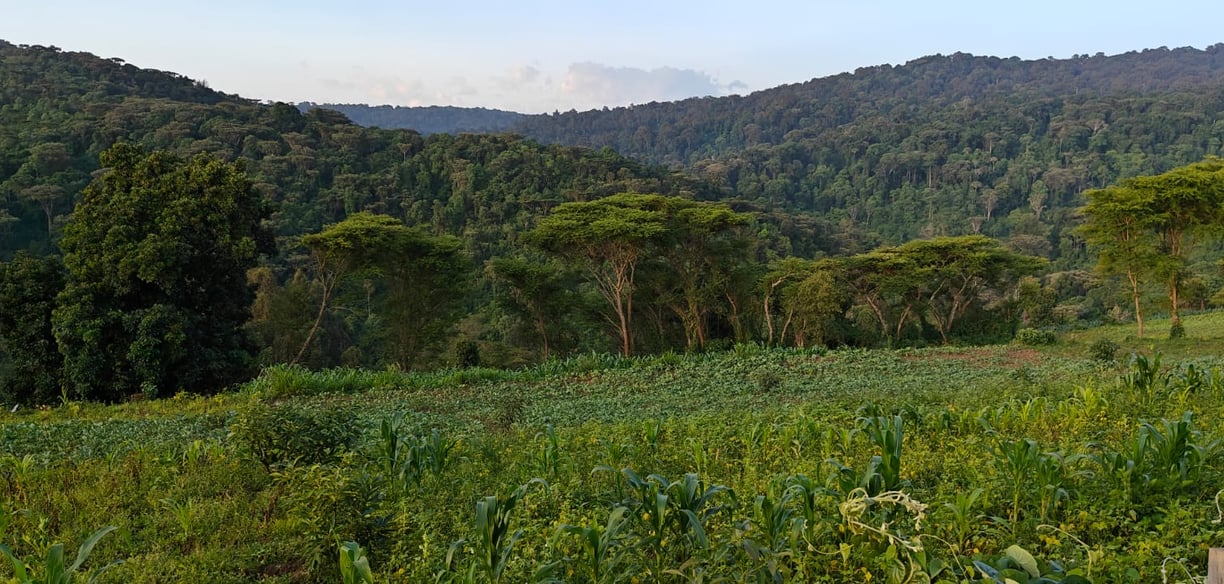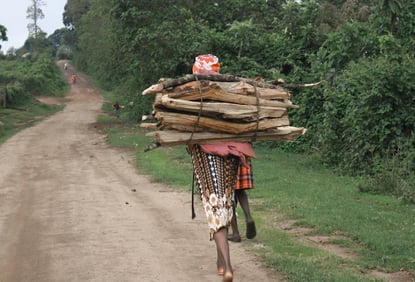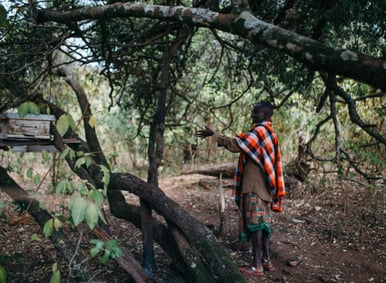Building Resilience through Forest-based Food Systems
The study used a comparative qualitative design to examine patterns and causal mechanisms across two forest ecosystems. A mix of in-depth interviews (IDIs), focus group discussions (FGDs), and key informant interviews (KIIs) helped unpack the complexities of community behavior, food production, and consumption decisions. Visual cues were used in FGDs to create more participatory conversations, and traditional healers and indigenous knowledge holders were included to validate and deepen insights.
Preliminary literature reviews and expert interviews informed our research questions and helped identify gaps in existing knowledge, ensuring a targeted and relevant field study.
PROJECT BRIEF
This seven-month exploratory research aimed to understand how tribal communities living adjacent to old-growth forests in Kenya interact with local agrobiodiversity to support their health, nutrition, and livelihoods. Conducted in Kakamega and Cherenganyi forests in partnership with Busara, the study sought to identify how traditional ecological knowledge and sustainable foraging practices can be leveraged to promote dietary diversity and combat nutrition-linked diseases such as Tuberculosis. The research builds on previous insights from India and Indonesia, enabling cross-regional comparison.


APPROACH
STAKEHOLDERS
The study in collaboration with Busara, involved a diverse range of stakeholders, ensuring perspectives from both expert voices and local communities were captured across the two sites:
Expert Interviews (Pre-fieldwork):
Researchers and domain experts with published work on Kakamega and Cherenganyi forest ecosystems and indigenous knowledge systems.
Kakamega Site:
Individual Interviews:Nutritionist, Traditional Medicine Woman, Community Foragers (firewood and mushrooms) and Indigenous Knowledge Holder
Focus Group Discussion (FGD): A mix of farmers, ecologists, and a homemaker
Cherangani Site:
Individual Interviews: Nutritionist, Forester, Traditional Medicine Man, Village Elder and Indigenous Expert
Focus Group Discussion (FGD): A mix of farmers, teachers, a herbalist, and a community health worker


KEY INSIGHTS
The Cherangani and Kakamega forests, home to the Sengwer and Luhya communities, showcase distinct ecological and cultural dynamics. Cherangani’s high-altitude ecosystem supports the Sengwer’s semi-nomadic, foraging-based lifestyle, while Kakamega’s tropical rainforest fosters intensive agriculture among the Luhya. Both communities face land tenure disputes and marginalization, with maize cultivation dominating livelihoods due to economic viability, reducing dietary diversity and reliance on nutrient-rich traditional crops like millet. Conservation regulations and deforestation strain foraging practices critical for nutrition and income, yet both communities demonstrate resilience through advocacy and sustainable initiatives.
Despite challenges, the Sengwer and Luhya leverage indigenous knowledge for healthcare, favoring traditional remedies for women’s health and other ailments. Cherangani’s reforestation efforts and Kakamega’s Pelis/Shamba system highlight proactive conservation, though governance disconnects hinder progress. Kakamega shows nutritional improvements, with stunting reduced to 12% and wasting at 1.5%, but 60% of households lack dietary diversity. Balancing land rights, traditional practices, and modern interventions is crucial for sustaining these communities and their biodiverse ecosystems.
OUTCOME
The research culminated in a comprehensive report designed to inform and engage potential investors in the nutrition and climate adaptation space. Findings emphasized the need to promote sustainable food production practices that restore agrobiodiversity, and to preserve indigenous knowledge systems as a pathway to community resilience. The report will guide future action-research and intervention design in select geographies of Kenya, aligning local ecological systems with nutrition and climate goals.



